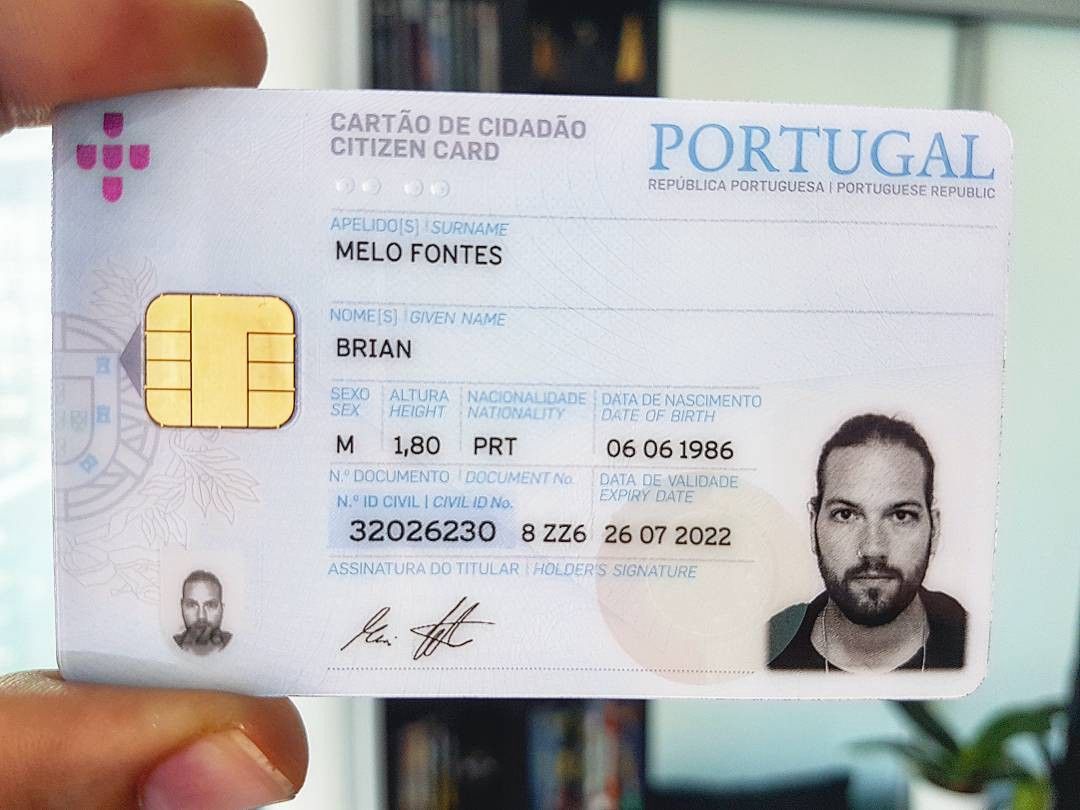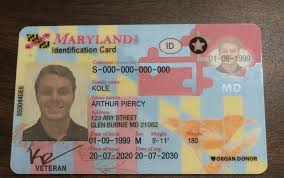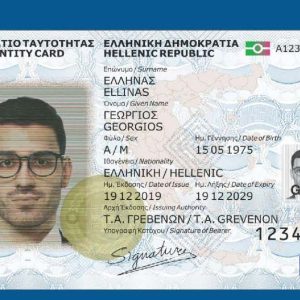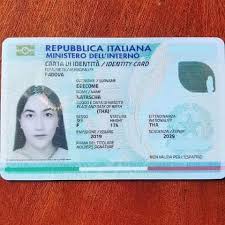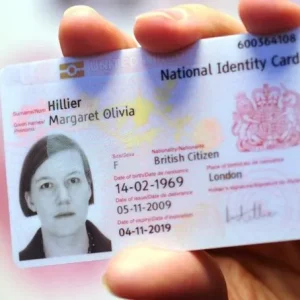Description
A NEW PORTUGUESE ID CARD SCHEME
The first pilot phase of the Portuguese ID Card also known as Cartão de Cidadão started February 14, 2007, in the Azores region. The full roll-out started in 2008.
In 2014, all Portuguese citizens have their new national identity card in hand replacing the old paper-based document.
The goal of issuing a Portuguese ID Card was to revolutionize the way in which Portuguese citizens interact with the government.
First, simplification.
THE NEW PORTUGUESE ID CARD REPLACES 5 CARDS
The card replaces 5 different physical ID documents :
Civil identification card – the former paper-based Portuguese ID Card
Taxation card
Voting card
Social security card
Healthcare card.
The new Portuguese ID Card known as Cartão do Cidadão or citizen’s card enables individuals to identify themselves in front of officials.
In addition, as of 2019, registered foreigners in Portugal are able to apply for the citizen card.
THEN, A NEW DIMENSION.
A NEW PORTUGUESE ID CARD FOR ONLINE AUTHENTICATION
The second goal is to use the card as a brand new tool for electronic signature and online authentication fostering the development of electronic transactions and giving citizens peace of mind in the digital age.
To identify and authenticate themselves, cardholders enter a secret pin code and the card then generates a digital signature for secure declarations and electronic administrative procedures.
This application provides the required cryptographic means for secure access to e-government services portal.
As the Portuguese constitution forbids a single central database for names, several identifiers can be found on the citizen card, at the front and back of the card (Civil ID number, social security number, tax number, healthcare user number).
Numerous public services are now available online and procedures that would have taken hours (obtaining civil records/birth certificates, Social Security declaration, etc) now take a matter of seconds.
As of 2014, over 45% of cardholders have activated their digital certificates.
This project is also supported by actions such as a very active website www.cartaodecidadao.pt
There’s more.
PORTUGUESE ID CARD AND BIOMETRICS
The Portuguese ID Card supports biometric authentication, when necessary, as fingerprints are safely stored in the microprocessor of the card.
The match on card mechanism allows biometric authentication without any central biometric database. This is strictly forbidden in Portugal.
Biometric credentials never leave the smart card, meaning that they remain protected at all times.
It is the card’s processor which carries out the check and answers yes or no to the question: does the fingerprint presented correspond to the one stored in the card?
A STRONG PARTNERSHIP
For INCM (Imprensa Nacional Casa da Moeda SA), the Portuguese National Printing Office, it was another opportunity to further enhance their unique expertise after the electronic passport project.
In 2006, INCM selected Thales as the prime contractor to provide the digital security solution for the national eID card (Sealys eID), including the secure operating system, the personalization system (Coesys Issuance solution) as well as the applications, the middleware and associated helpdesk services with Zetes Burótica, the Portuguese subsidiary of Belgian Zetes Industries.
The Portuguese government selected a secure identification document, based on identification, authentication and signature (IAS) specifications – the first in Europe.
BEYOND THE CITIZEN CARD
Portugal is a fascinating case in point for State modernization.
When Portugal decided a few years ago to speed up the implementation of its e-Government plan and to drastically cut bureaucracy, its aim was to transform the public sector into a collaborative, inclusive body, and place Portugal as one of the leaders in terms of service quality for citizens and companies.
The goals of a more citizen-centric society have rarely been asserted with such strength from the outset, with such a comprehensive understanding of the issues.
Citizen shop
PORTUGAL AND STATE MODERNIZATION – 15 YEARS AGO
At the beginning of the last decade, Portugal was still an extremely centralized country, with rifts between local and central authorities which were difficult to bridge.
The internet had made massive inroads with the country’s elite, but few citizens were making the effort to access the internet or online services.
So the challenge to modernize the state using digital means, and bringing citizens and public authorities closer together through digital communication channels, strengthening social cohesion, seemed an insurmountable one.
It seemed that the country would have to wait for the change to be made by the next generation, more up-to-date on new communication methods.
BOLD STATEMENTS FOR A NEW VISION
Yet, Portugal made the following bold commitments:
Administrative bodies are too partitioned? Cross-functionality will be a priority.
The general public is very wary of change? The benefits of this change will initially be concrete and visible, before being transferred to the digital environment.
Back offices set too many constraints and impair the service quality of public authorities? The new organization will be completely rebuilt based around citizens’ needs, pushing the citizen-centric eGovernment vision as far as possible without impairing administrative efficiency.
SIMPLEX AND SIMPLEX+ MODERNIZATION PROGRAMS
SIMPLEX
Between 2006 and 2011, more than 1,000 measures of administrative and legislative simplification and e-government were successfully implemented in the so-called Simplex program, the name of the state modernization initiative.
2 examples:
the Citizen Card launched 10 years ago replacing 5 documents
the Citizen Shop providing a one-stop-shop for public administration and many private services as well. In 2017, there were 533 Citizen Shops, offering approximately 200 public services.
Overall they had a very positive impact on the lives of citizens and businesses and reduced administrative costs. The execution rate of the program was always in excess of 80%.
Some of the program’s measures were singled out and obtained international awards, both from the United Nations (2018 report – see page 39) and the European Commission.
Simplex is associated with positive changes and to cutting red tape in public services.
SIMPLEX+
SIMPLEX +, the new program, has a cross-cutting nature, covering all the domains where the state is actively present. It has also preserved its common approach to the various aspects of simplification, but it addresses new challenges in a new era.
Simplex+ is also remarkable in many respects.
First, it is more participatory, co-produced and done with full transparency and accountability.
It’s stimulating innovation – to invite innovators to look at central administration. a ‘startup simplex’ competition was launched in 2017. It’s aimed at rewarding innovative ideas for products and services that will simplify the interactions of citizens and businesses with public services.
Finally, the Simplex program takes the drive towards simplification beyond the boundaries of public services by including measures such as the “simpler opening of a bank account” that require a collaboration between the public and private sectors.
The result?
Between 2016 and 2018, Portugal has jumped 9 places in the United Nations e-Government Development Index (EGDI).
LESSONS FROM THE PORTUGUESE EXPERIENCE
At a time when secure digital identity is considered as a key for digital service uptake and digital dividends, it is worth drawing lessons from the Portuguese experience:
Permanence – successful transformation and uptake of the new system are built on unchanging fundamentals and it all takes time.
Guidance -If things are changing, however, change need to be explained. Guidance will need to be offered, and it will be important to ensure positive feedback in order to foster peoples’ trust.
Next, it’s important to provide something highly visible – like citizen spots and citizen cards– to encourage uptake before going virtual. This is especially true in areas where digital technology hasn’t yet reached enough people.


